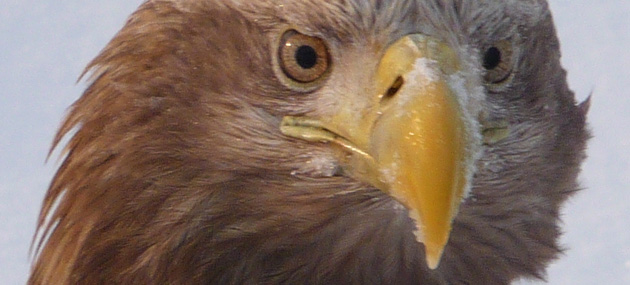Kanagawa Prefecture
Several locations in Kanagawa Prefecture are very worthwhile for birding:
-
Lake Miyagase
-
Futagoyama
-
Jogashima
-
Terugasaki
-
Maioka Park
Lake Miyagase
Southwest of Tokyo, about an hour by express train and another 45 minutes by bus, lie the thickly forested Tanzawa Mountains. On the northeast side is a reservoir known as Lake Miyagase (Miyagase-ko). The lake lies within the Aiko District of Kanagawa, between Sagamihara and Atsugi.
It offers views of the Tanzawa Mountains, including Mt Hiru. The lake was formed following the construction of the Miyagase Dam, to provide a source of drinking water for the cities of Yokohama and Tokyo.
Within the Tanzawa range are several lakes, and one in particular that is worth visiting is Lake Miyagase. It is easily reached by bus from Hon-Atsugi Station, which is on the Odakyu train line from Shinjuku, in central Tokyo.
The area is well-known as one in which to search for Crested Kingfisher and Mountain Hawk Eagle.
The lake and surroundings are a popular destination during the winter months for local photographers who go there to take photos of Long-tailed Rosefinch, Daurian Redstart and an assortment of buntings. Small numbers of Japanese Accentor also occur here in winter.
On a fine day, the blue bridge over the Hayato River attracts a small crowd of dedicated eagle photographers, and anywhere in the surrounding forests, the eternally elusive Copper Pheasant can be found.
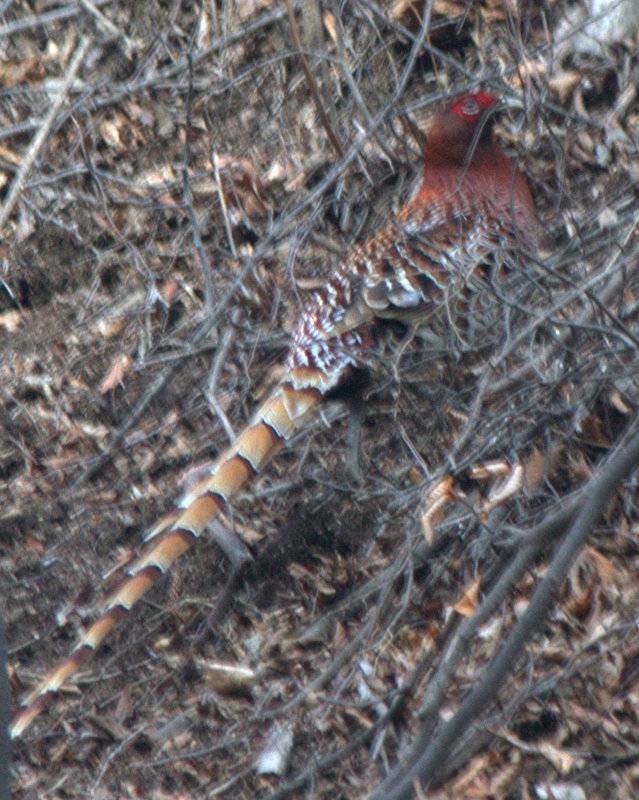 Directly east of the bus stop – about a 10-minute walk – is an open park-like area with a small lake which attracts various ducks as well as Grey Heron and Great White Egret. Along the streams look for Brown Dipper and Common Kingfisher, and in the open grassy areas where there are small trees or bushes, wintering Bull-headed Shrike and Dusky Thrush can be found.
Directly east of the bus stop – about a 10-minute walk – is an open park-like area with a small lake which attracts various ducks as well as Grey Heron and Great White Egret. Along the streams look for Brown Dipper and Common Kingfisher, and in the open grassy areas where there are small trees or bushes, wintering Bull-headed Shrike and Dusky Thrush can be found.
The main area to check is the Hayato-rindo (forest track) which is closed to ordinary traffic. This is where the photographers can be found, staking out their subjects, and the track runs alongside the lake. From the vantage points look for Western Osprey, Little Grebe and, during the winter, Mandarin Duck.
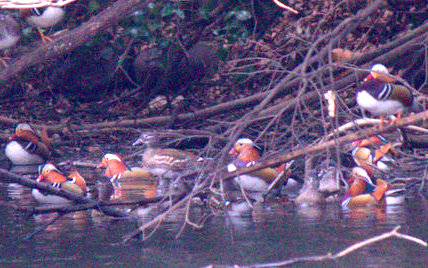
It is about 5 km from the entrance to the blue bridge, so it is a good idea to carry your lunch and something to drink to make it possible to eat a picnic along the way while watching for Crested Kingfisher and Mountain Hawk Eagle.
Early on summer mornings (May, June, July) Miyagase's forests are alive with the morning chorus of birdsong including those of: Blue & White Flycatcher and Narcissus Flycatcher, Japanese Thrush and Japanese Grosbeak, and also the mournful song of the White-bellied Green Pigeon.
Public Transport details: The bus departs from the north side of Hon-Atsugi Station, from bus stop #5 (in front of the Lawson convenience store). The destination is Miyagase, the final stop of the #20 bus.
From Miyagase, the last Kanachu Bus of the day leaves just before 2000: most buses depart at 10 minutes to the hour (17:50, 18:50, 19:50). There are toilets by the bus stop, but no facilities once you are beyond the entrance of the forest road.
The entrance to the Hayato-rindo can be found at map reference: 35.525193, 139.222435, while the blue bridge over the Hayato River can be found at map reference: 35.520043, 139.203595.
Futagoyama
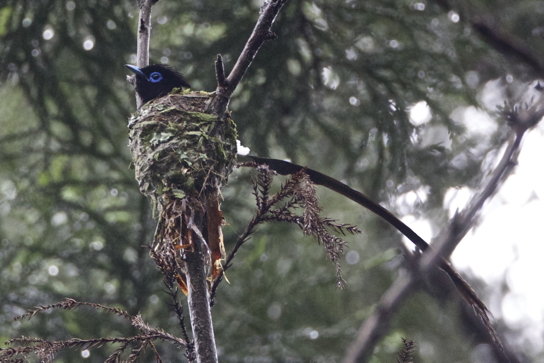 The forested valley at Futagoyama provides an opportunity to look for a wide range of common resident Japanese birds, such as Brown-eared Bulbul, Japanese Pygmy Woodpecker and Varied Tit, but is best known in summer (from mid-May until early July) as the easiest site close to Tokyo to search for Japanese Paradise Flycatcher.
The forested valley at Futagoyama provides an opportunity to look for a wide range of common resident Japanese birds, such as Brown-eared Bulbul, Japanese Pygmy Woodpecker and Varied Tit, but is best known in summer (from mid-May until early July) as the easiest site close to Tokyo to search for Japanese Paradise Flycatcher.
Directions: Take the train from Tokyo to Zushi. You can use either the JR Yokosuka line from Narita Airport /Chiba/Tokyo/Shimbashi/Shinagawa (and on to Kawasaki and Yokohama) to Zushi Station, or the Keihin-Kyuko line from Shinagawa Station to Shin-Zushi Station.
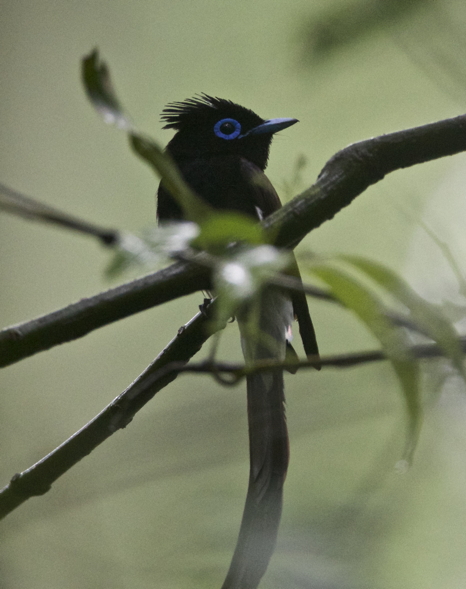
From either of the two Zushi stations it is probably best to take a taxi (about ¥1,000) to Kawakubo junction in Hayama town. The junction is on Route 311.
Kawakubo junction: http://diddlefinger.com/?ll=35.283852,139.589324&z=18&t=m
At this junction cross to the south side (you will see Vertex Garage on the opposite side). Walk along Route 311 in an easterly direction (against the flow of traffic) for about 50 metres, where there is a 7-11 convenience store (visible from the junction).
There are no toilets along the trail, so please use the ones at the 7-11 store, where you can also buy food/drink for a picnic.
At the side this store is a narrow pathway which goes for about 20 meters to the road behind (the same road coming from the direction of Vertex Garage). Turn left, and about 30 metres on the right side a small road goes off to the right (on the corner, there is a sign for Hearts cafe). Follow this road for about 500 metres (over the stream/bridge, past the NicoNico kindergarten and Hearts cafe (both on right side) to the entrance to Futagoyama.
Near to the entrance you will come to a sharp right-turn bend, then a stone mason's yard (left side), then another small bridge. There are some allotments on both sides here, and 50 metres or so further on, just by the muddy parking area under the tall cypress trees, you will come to a metal barrier across the track: this marks the entrance to the Futagoyama trail. Hung on the barrier is a big sign in red Chinese characters: Danger, keep out!
Entrance barrier: http://diddlefinger.com/?ll=35.279727,139.593637&z=18&t=m
Squeeze between the bars of the barrier and then wander the trail inside the forest between the hills. At one point you will walk under an overpass bridge (you can hear the vehicles passing by) and maybe 200-300 m further on you will likely find photographers. In late May or early June, if a nest has been located, these photographers will be standing in the trail with cameras, lenses and tripods set up.
One to three pairs of Japanese Paradise Flycatchers nest here each year and are the focus of considerable attention from local photographers who gather by the dozen when the pairs are nesting.
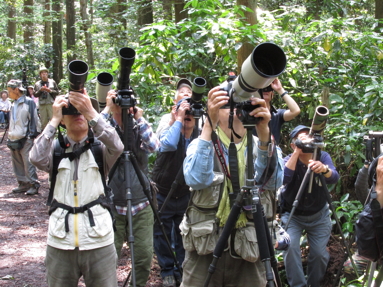 Otherwise, just wander along the trail as far as the wooden benches on a raised area above the stream. This is about 1.5 km from the entrance barrier. There is usually a pair of flyctachers around here too, but the best bet is to hang around where the photographers are.
Otherwise, just wander along the trail as far as the wooden benches on a raised area above the stream. This is about 1.5 km from the entrance barrier. There is usually a pair of flyctachers around here too, but the best bet is to hang around where the photographers are.
To return to Zushi Station, you can walk (about 45 mins) or arrange for a taxi to come and pick you up at Kawakubo junction at a certain time. There is also a bus stop on the west side of Kawakubo junction but buses are infrequent, and there are none in the late morning and early afternoon. Buses go to/from JR Zushi Station.
Jogashima 城ヶ島
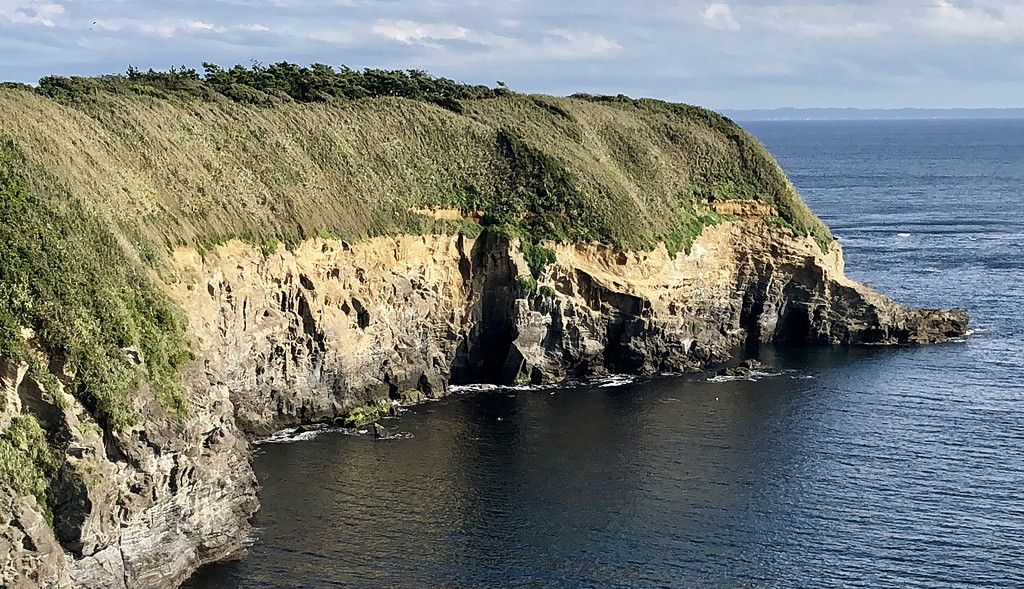 At the end of Kanagawa Prefecture's Miura Peninsula, southwest of Tokyo, lies the small island of Jogashima.
At the end of Kanagawa Prefecture's Miura Peninsula, southwest of Tokyo, lies the small island of Jogashima.
Unless you have the time to take the Izu ferry to Miyakejima or Hachijojima, Jogashima is as good a place as any in the Tokyo area to try for seabirds, especially after a storm or typhoon.
The island is connected to the mainland by a bridge, and as it is only about 1 km from east to west and less from north to south, Jogashima is an easy place to walk around.
Birding on the island is probably best at Jogashima Park, where the many trees and bushes attract migrant birds during the spring and autumn. During the daytime the sky above the park is usually crowded with Black-eared Kites, and Eastern Blue Rock Thrushes and the occasional Eastern Reef Egret can be seen along the rocky coastline.
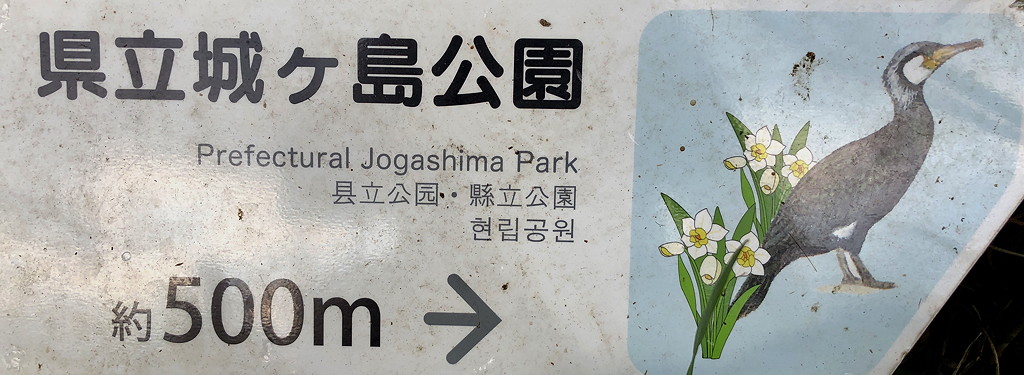 One of the attractions during the winter months, from late November until February, is the roost of Temminck's Cormorants on the sheltered sandstone cliff on the south of the island. About 2,000 birds gather there and mixed in are smaller numbers of Pelagic Cormorants.
One of the attractions during the winter months, from late November until February, is the roost of Temminck's Cormorants on the sheltered sandstone cliff on the south of the island. About 2,000 birds gather there and mixed in are smaller numbers of Pelagic Cormorants.
There is a viewing platform, but no telescopes or binoculars are provided, so bring your own.
Offshore, large numbers of Streaked Shearwaters can be seen, especially during the summer and autumn, and during the winter months it is definitely worth taking a telescope there to search for any albatrosses passing between Jogashima and Izu Oshima, which is visible on the horizon directly to the south. These will most likely be Laysan Albatross, but Black-footed Albatross is also possible.
During calm winter weather Japanese Crested Murrelet can sometimes be found feeding close to the shore on the south side of the island.
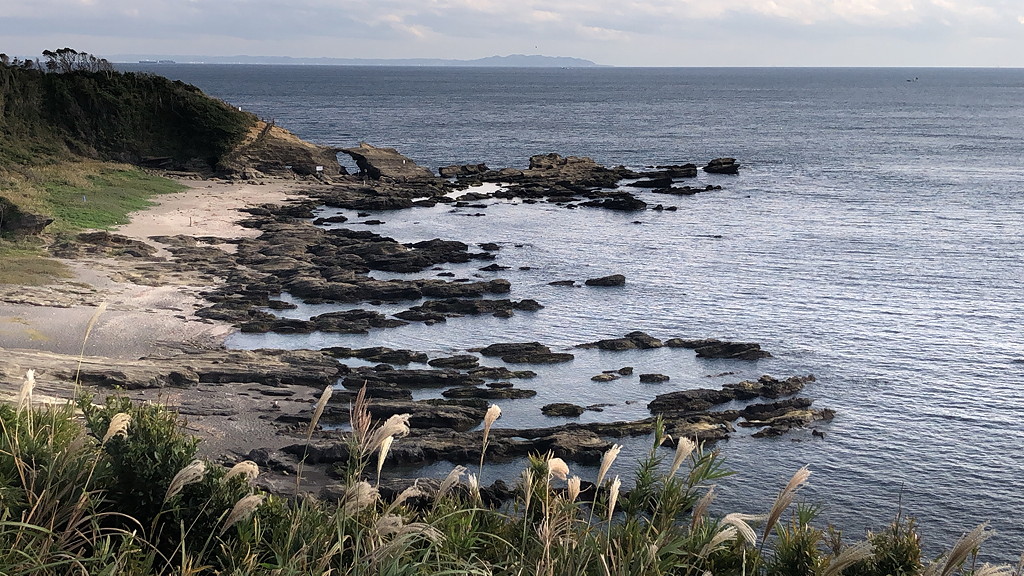 Also, on calm, sunny days between mid- or late September and early October, it's a place to look out for migrating birds of prey — especially Grey-faced Buzzards — overflying the island as they head west.
Also, on calm, sunny days between mid- or late September and early October, it's a place to look out for migrating birds of prey — especially Grey-faced Buzzards — overflying the island as they head west.
From the park during clear autumn and winter days, views of Mount Fuji can be had.
There are numerous seafood restaurants selling the freshest Miura tuna sashimi near the bus stop, and toilet facilities can be found there and also at the park. A convenience store and tourist information office are located at Misakiguchi Station.
Access:
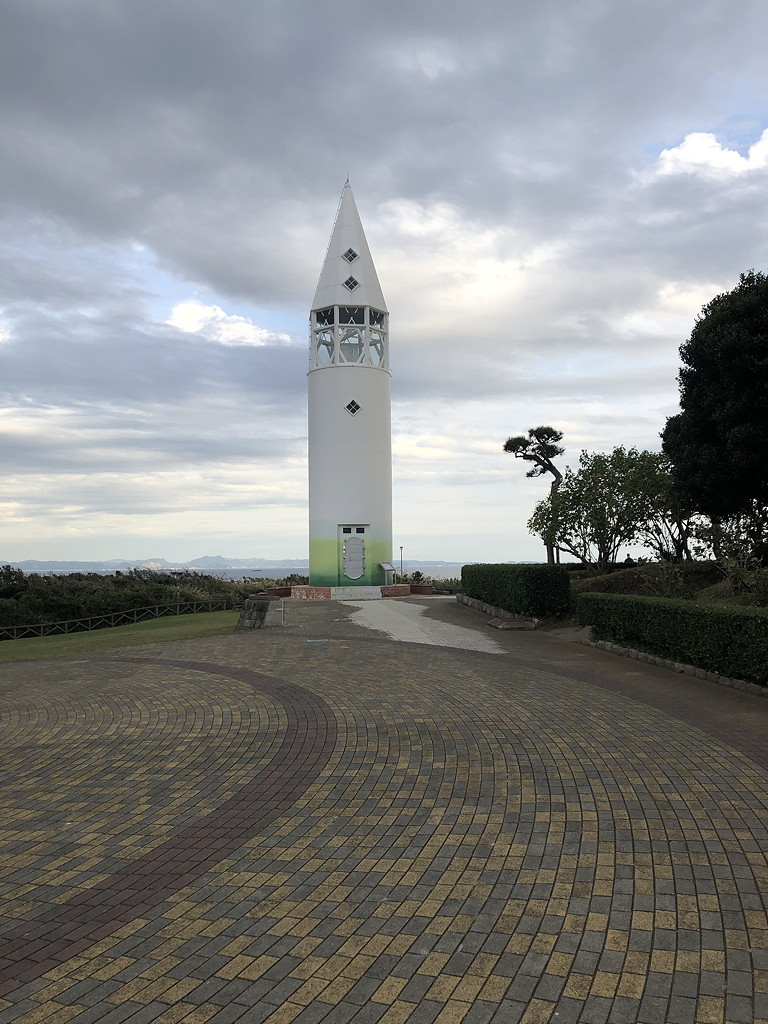 From Tokyo Keikyu line trains leave from Shinagawa and en route to Misakiguchi Station (at the end of the line) stop at Keikyu Kawasaki and Keikyu Yokohama stations. It takes about 75 minutes from Shinagawa to Misakiguchi Station.
From Tokyo Keikyu line trains leave from Shinagawa and en route to Misakiguchi Station (at the end of the line) stop at Keikyu Kawasaki and Keikyu Yokohama stations. It takes about 75 minutes from Shinagawa to Misakiguchi Station.
With a change of trains at Keikyu Kamata or Keikyu Kawasaki or Yokohama, there is a connection to Misakiguchi from Haneda International Airport, too.
From outside Misakiguchi Station a bus from the #2 bus stop will take you to Jogashima in about 30 minutes, but at weekends and on public holidays, beware of traffic jams in the narrow roads leading to and from the island.
Terugasaki
If you want to see White-bellied Green Pigeon, Terugasaki is the best place to go.
Early in the morning on hot summer or early autumn days, flocks of these pigeons drop in at this site after flying 30–40 km from the Tanzawa Mountains, which rise up behind Sagami Bay. At Oiso Beach, they land on small rocks offshore and drink their fill of seawater before heading back to the mountains. The best time to visit is from 06:00–10:00, and most of the action is over by late morning.
The rocks are just metres offshore, so the birds are close and excellent views can be had. It is a popular spot for photographers -- some fantastic shots have been taken as the pigeons suddenly take off vertically in front of breaking waves.
Other birds in the area include: Streaked Shearwater, Temminck's Cormorant and Blue Rock Thrush. There is a recent record of Arctic Tern here too.
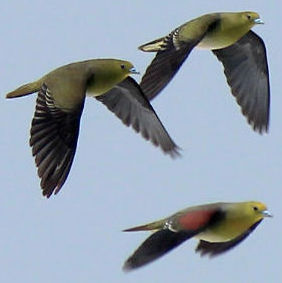 Access: From Tokyo/Yokohama take the JR Tokaido line to Oiso Station. Terugasaki, on the west side of Oiso port, is about a 20-minute walk to the southwest of the station. There are car parks nearby, but as the area is popular with surfers there is considerable congestion so it is easier to go by train and then walk.
Access: From Tokyo/Yokohama take the JR Tokaido line to Oiso Station. Terugasaki, on the west side of Oiso port, is about a 20-minute walk to the southwest of the station. There are car parks nearby, but as the area is popular with surfers there is considerable congestion so it is easier to go by train and then walk.
The site is a few metres to the west of the port, on the south side of Route 1. There, you will find Port House Terugasaki, a small waterpark with outdoor swimming pools. Between the waterpark and the east end of Oiso Beach there is a walkway along the sea wall that provides suitable viewing opportunities.
Viewing Location Map information:
35.305945, 139.315361
Maioka Park 舞岡公園
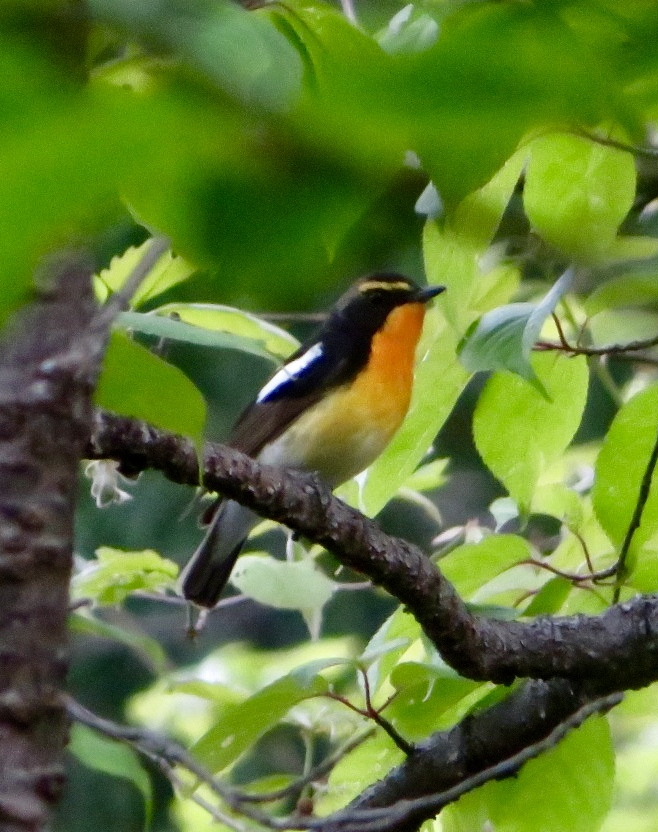 Situated in southwest Yokohama's Totsuka Ward, Maioka Park is a good place to get to know the commoner Japanese park birds, and during the migration season a few migrants — thrushes, warblers, flycatchers and buntings, to name a few — drop in.
Situated in southwest Yokohama's Totsuka Ward, Maioka Park is a good place to get to know the commoner Japanese park birds, and during the migration season a few migrants — thrushes, warblers, flycatchers and buntings, to name a few — drop in.
Between December and March, the marshy area close to the north gate (北門) attracts a crowd of photographers as it is a reliable site for Eurasian Woodcock.
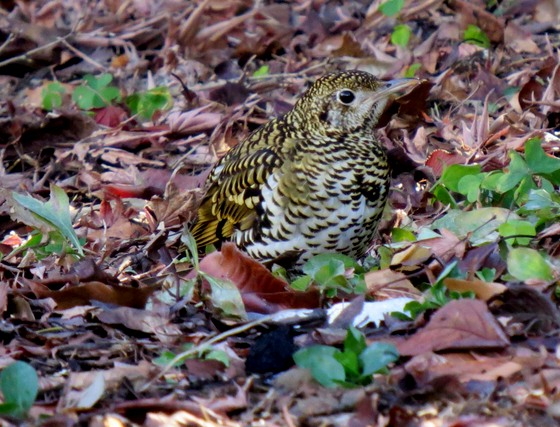 The park is also a good place in the winter for thrushes. Among the trees and in shady areas look for White's Thrush and Pale Thrush, and in the open grassy areas, there are usually a few Dusky Thrush and Brown-headed Thrush. Nearby, the bushes are good places to search for Daurian Redstart and Red-flanked Bluetail.
The park is also a good place in the winter for thrushes. Among the trees and in shady areas look for White's Thrush and Pale Thrush, and in the open grassy areas, there are usually a few Dusky Thrush and Brown-headed Thrush. Nearby, the bushes are good places to search for Daurian Redstart and Red-flanked Bluetail.
Much of the park is covered with mature trees and there is no shortage of bushes and bamboo in which the birds can hide. Among the trees there are a couple of small ponds, and in the narrow valleys, rice paddies — where Common Snipe can often be found during the winter months.
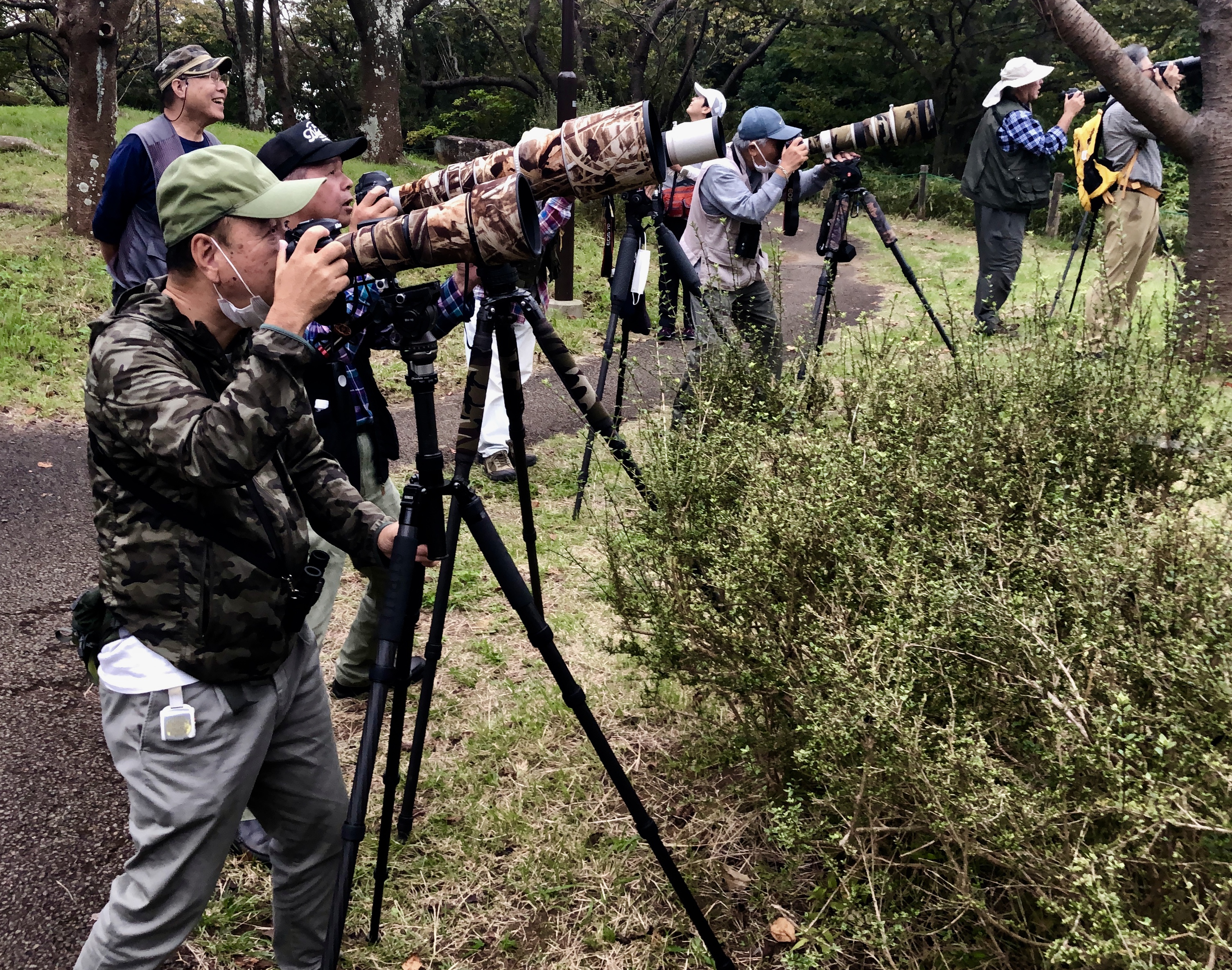
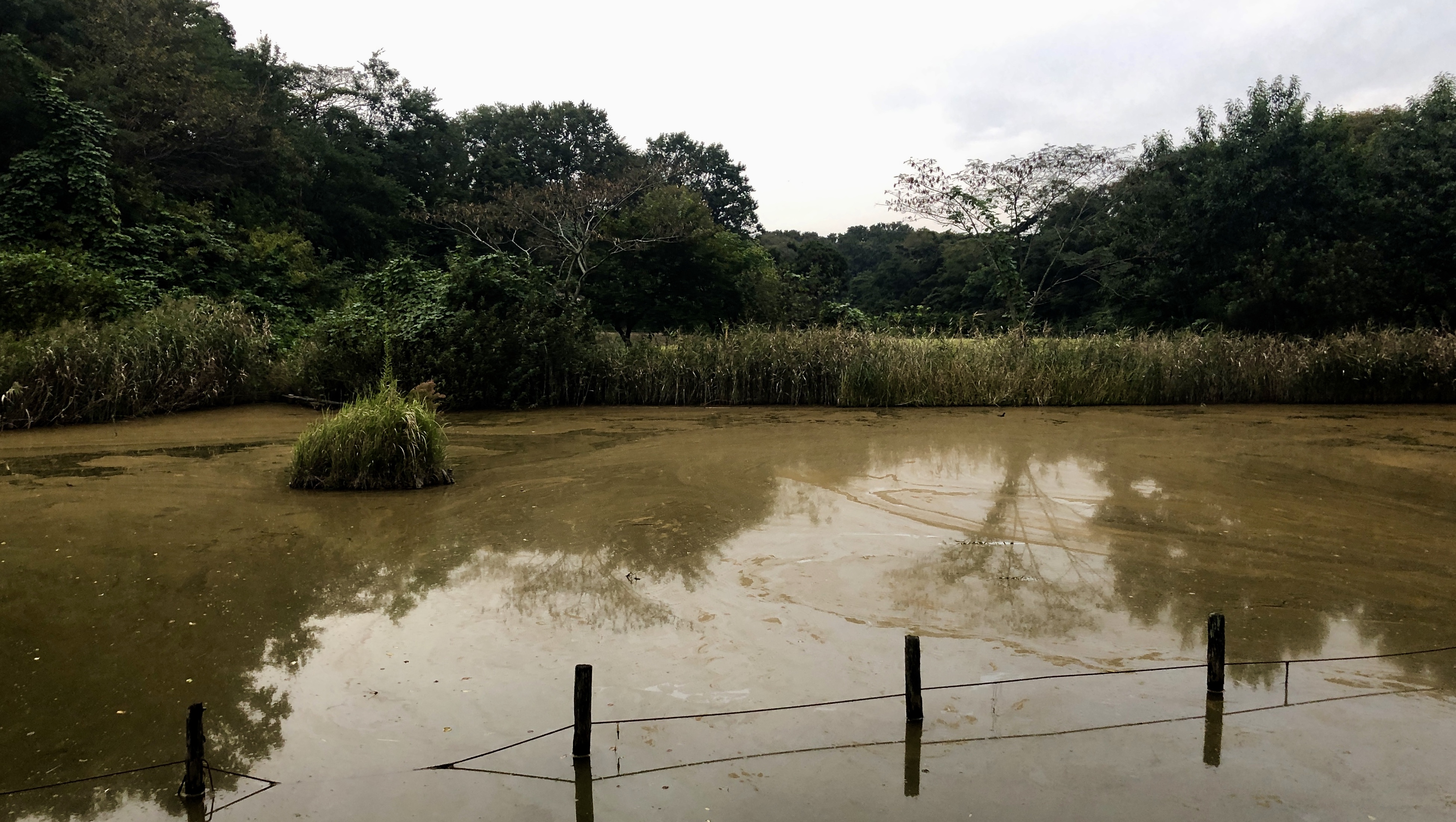 Directions:
Directions:
Maioka Station can be reached by taking the Blue Line subway train from either Yokohama Station or JR Totsuka Station. From the former it is 13 stations down the line (about a 20-minute journey), but from Totsuka Station it is the next station, only two minutes away! Totsuka Station can be reached from Tokyo, Kawasaki and Yokohama by frequent trains on the JR Tokaido and Yokosuka lines.
From Maioka Station use Exit 1, and at street level, immediately turn to the left and follow the road for 1.5 km to the park. There is a convenience store about 75 m from Exit 1 for food, drinks and toilets. There are toilet facilities, benches and water fountains at different places around the park.
Enoden Bus also has a service from the east exit of Totsuka Station to Sakashitakuchi bus stop, which is about a 10-min walk from the park.
Park office information (in Japanese): 045-824-0107
Map information: 35.386961, 139.550229
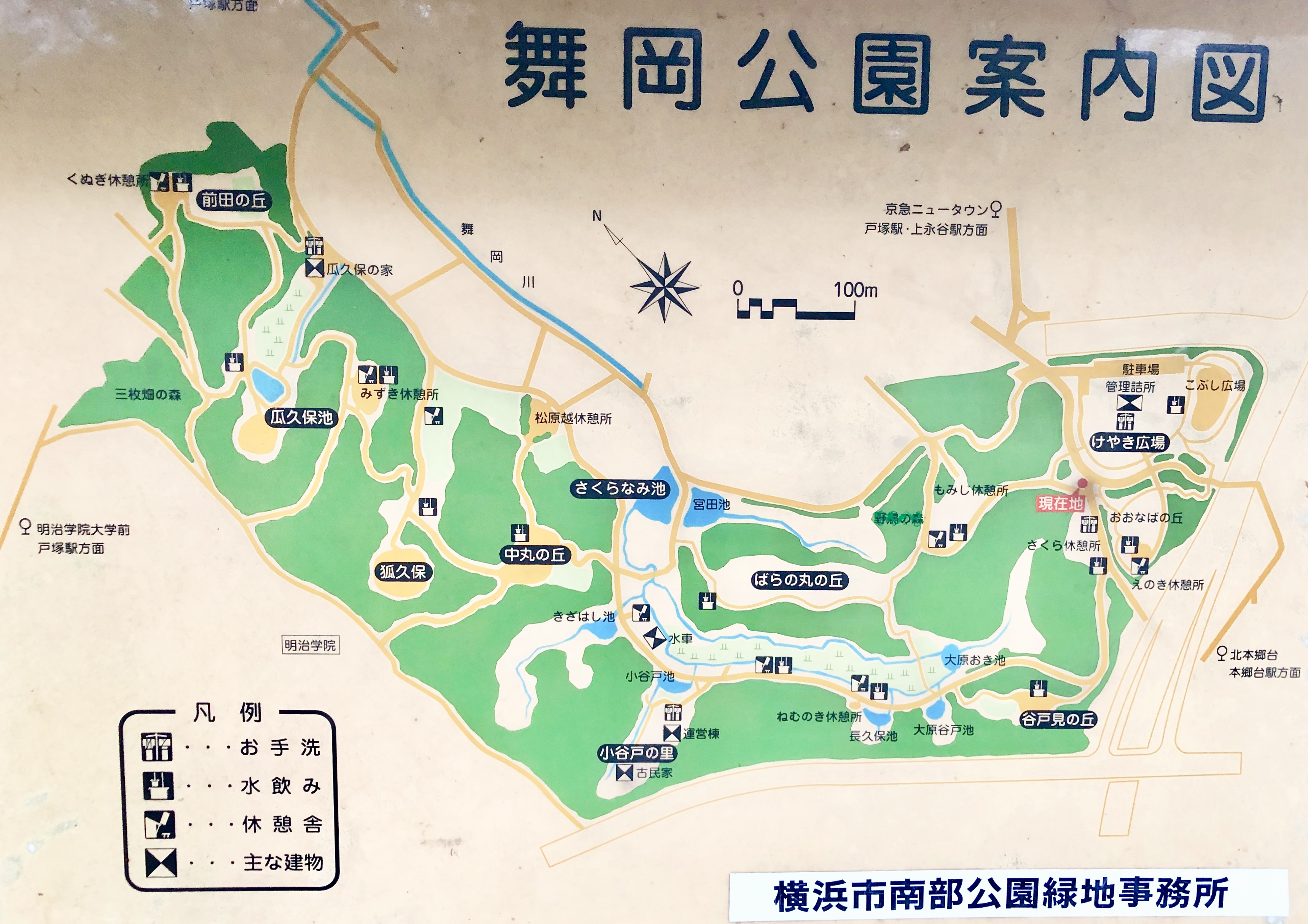
© 2021 Mark Brazil & Chris Cook
Last updated: 20210925

